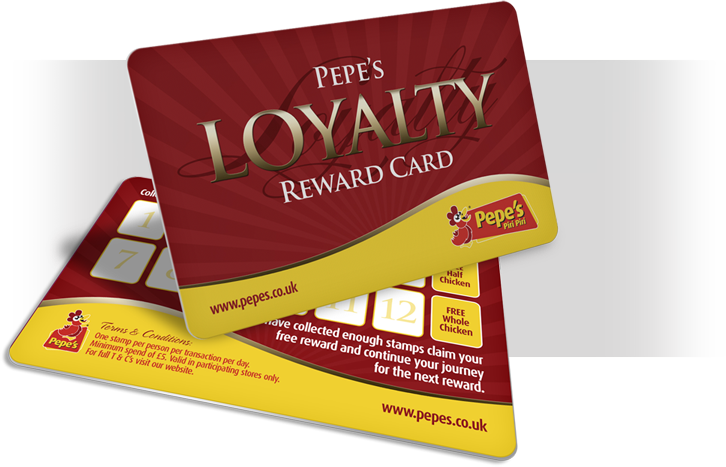Brand Loyalty and Repeated Purchase Behavior
Repeated purchases of the same branded products or services, rather than buying similar unbranded products from multiple suppliers is called brand loyalty. Brand loyalty reflects mission, vision, values, beliefs, logo, name, tagline, watermark, quality, price, design, color, graphical elements, perceptions, trust, and strategy.
The brand is a promise to deliver better quality products and services to the customers and it differentiates the branded products from other similar products. This major variation between the branded products and unbranded products is the main cause of brand loyalty. It is the main reason why customers are paying more for the branded products, though there are many identical unbranded goods and services in the market. This situation stimulates the customers to buy the same brands or services repeatedly.
Why do customers like to choose branded products?
Better quality
Branded products are more demanded than the unbranded products because of the assurance created by the brands in the minds of the customers. Most of the customers give preference to branded products because of its better quality when compared to the local products.
Social status

Many customers perceive that using branded products maximizes their status in the society. This is one of the main reasons for buying branded products rather than buying unbranded products with similar features, better quality, and price. Some people believe that using branded products reflects their status and reputation, so they do not like to buy unbranded products.
Craziness towards branded products

Customers give importance to quality, price and availability, though all these factors may not be fulfilled by buying branded products, still they do repeated purchases of branded products because of their tastes, willingness to buy, ability to pay nature and mainly craze about branded products and services can make consumers in overcoming all the difficulties such as higher prices and unavailability in the local markets.
Uniqueness

Customers compare branded products with other similar products while they take purchase decisions, the comparisons usually in between features, colors, designs, and quality, etc. The uniqueness of the branded products helps in attracting the potential customers and motivates them to do repeated purchases.
Product awareness
Generally branded products are produced by the major firms with huge capital, so in order to get market share and huge profits these firms invests more on various promotional programs, such promotional efforts can create a memorable impact in the minds of the customers and the brand will become familiarize. Product awareness maximizes the chances of knowing product benefits, features and value created to the customer’s money and it helps in maximizing sales.
Perceptions

The uniqueness of customer’s thinking about branded products motivates them to buy these products even with higher prices. It completely depends on the customer’s perception levels whether to buy the product or not. The majority of the customers are in a belief that all the branded products and high-priced products are qualitative and these cannot be compared with the local products. This is the main reason marketers set skimming prices to maximize the brand image; this brand image makes the customers buy branded products though there are many other unbranded products with better features better quality and better price.
Influence

Influence of social media and word of mouth highly changes the mindset of the customers due to memorable impact created by various factors such as advertisements in social media, the number of likes and comments; these can create a differentiation between branded products and unbranded products and motivates the target customers to buy the branded products.
Thought of risk

Many branded products have proven that they are qualitative and durable, the uniqueness and consistency of branded products and few bad experiences with unbranded products creates a negative impact towards the unbranded products in the minds of the customers. So while taking purchase decisions related to electronic goods and health care products customers give preference to branded products due to the thought of risk.
Types of customer loyalty

Customer loyalty towards a brand depends on the brand consistency, quality, customer service, loyalty cards, positive attitude towards specific brands and problem resolution strategies of the particular brand etc. There are different types of customers who show variations in their loyalty depending on the frequency of purchases and attachment towards a brand.
High loyal customers
The customers who purchase regularly and repeatedly from a single vendor are called high loyal customers. They not only purchase the same branded products but they refer and recommend to others also. These customers are much interested in promoting the brand with word of mouth and through social media.
Spurious loyal customers
The customers who show a positive attitude towards a specific brand and they do not show high loyalty towards that brand are called spurious loyal customers. These customers do repeated purchases due to the lock-in costs, convenience, and unavailability of feasible alternatives.
Latent loyal customers
The customers who show a very high positive attitude towards a particular brand but they do not purchase or do not purchase repeatedly are called latent loyal customers. It is very difficult to the marketers to make them high loyal due to the factors such as income levels and unemployment.
Low loyal customers
These customers do not show loyalty towards any brand and they purchase products depending on the deals and prices. These customers show very less frequent purchases.
Necessary conditions for brand loyalty
Building brand loyalty maximizes market share and competitive advantage, it is very important for an organization to know the mindset, tastes and preferences of the customers to increase the brand image, the necessary conditions for increasing brand loyalty are customer’s perceived value, customer satisfaction, commitment, brand trust and repeated purchase behavior.
Customer’s perceived value

Positive attitude towards a brand maximizes customer’s perceptions in a positive way which is necessary to maximize the brand loyalty. Quality, durability, and features create a positive impact in the minds of the target customers which enhances the value created by the products to the customer’s money.
Customer satisfaction
Customer satisfaction is the most important factor for the brand loyalty. Marketers do various approaches to maximize customer satisfaction and brand image such as quality customer services, value creation, maintaining proper customer relations, market research, offering loyalty cards, gifts, rewards, free shipping, and installations etc.
Brand trust

Trust is the foundation for brand loyalty; a brand is an organization’s promise to deliver better goods and services to the customers. Brand trust is the customer’s belief towards organization’s promise. Creating trust in the minds of customers by maintaining consistency helps in increasing brand trust and brand loyalty.
Repeated purchase behavior

Repeated purchase behavior shows the extent of customer satisfaction and brand loyalty. So marketers should concentrate more on high loyal customer groups to enhance the brand image and loyalty. Satisfaction and willingness to buy maximize the positive perceptions; it motivates the customers to do repeated purchases.
Commitment
High loyal customers committed to purchasing particular brand products; they do not like to shift over to other similar products. These customers purchase and make others to buy those products through word of mouth and positive feedback.
Brand loyalty programs
The main aim of brand loyalty programs is to maximize the customer loyalty or to make the customers more loyal towards a particular brand. Brand loyalty programs involve creating awareness about a brand, motivating customers in changing their attitude towards the brand, communicating the value created by the brand to the customer’s money, creating and enhancing customer loyalty, offering loyalty cards, and through various advertisement efforts such as celebrity endorser, kiosks, covert and through exhibitions.
Benefits of conducting loyalty programs
- Conducting brand loyalty programs maximize customer loyalty towards brands and it helps in enhancing the repeated purchase behavior.
- Offering loyalty cards such as discounts on purchasing a certain quantity of goods, discount coupons for next purchases, one plus one offers, rewards, special treatments, gifts and reward points can promote the repurchasing behavior of the customers.

- It helps in creating brand awareness and helps in increasing the number of high loyal customers
- It motivates the customers to become more committed towards a brand.
- Various advertisement efforts can create memorable impact in the minds of the customers.




